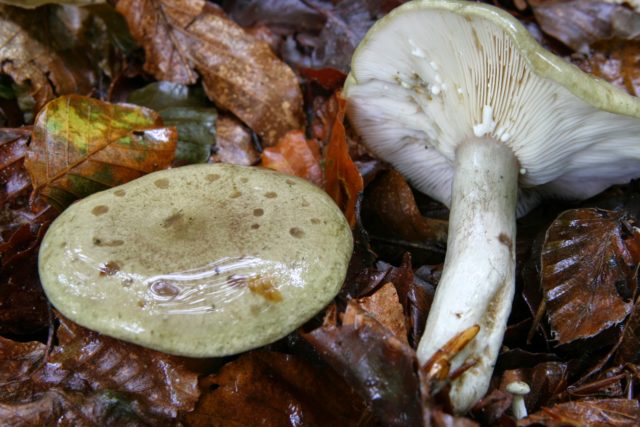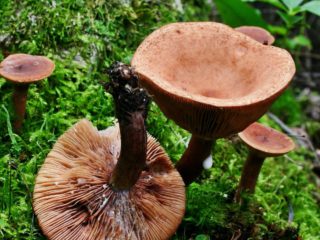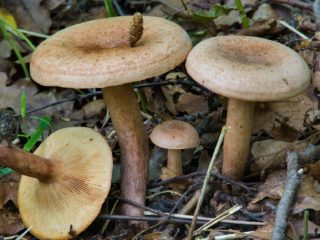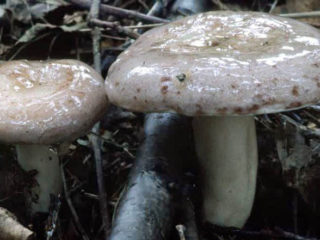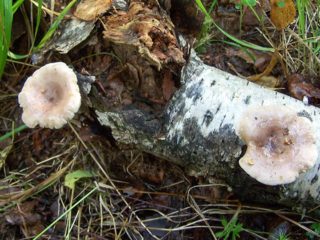Content
Pale milkweed, also known as dull or pale yellow, belongs to the Russulaceae family, genus Lactarius. The Latin name for this mushroom is Lactifluus pallidus or Galorrheus pallidus.
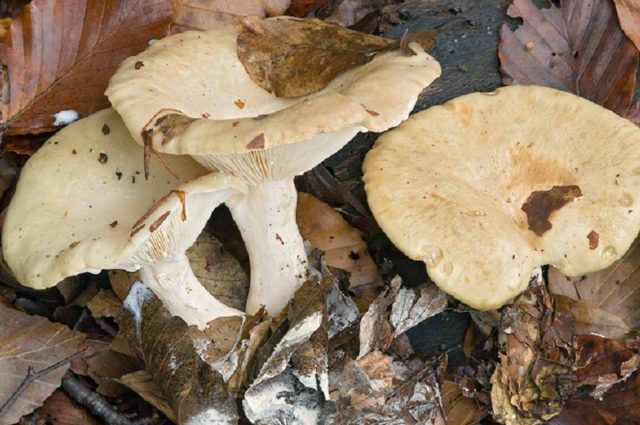
This mushroom is considered rare and has no particular value for mushroom pickers.
Where does the pale milkweed grow?
The habitat of the pale milkweed covers deciduous and mixed forests located in the temperate climate zone.It is quite rare. Mycorrhiza forms with oak, beech, and birch.
Fruiting is stable, the active period of which is July-August. The fruiting bodies grow in small clusters.
What does a dim milky look like?
A young specimen has a convex cap, which with growth becomes depressed, funnel-shaped and reaches up to 12 cm in diameter. The surface is smooth, covered with mucus, light ocher or fawn.
The hymenophore is plastic with thin, sometimes branching, plates descending along the stalk. Their color is identical to the cap, but when pressed and as they mature, spots of a straw, ocher hue appear, which when drying acquire a rusty color. Under a microscope, the spores are round in shape with hair-like spines. In bulk they are a pale ocher powder.
The leg is cylindrical in shape and reaches up to 9 cm in length and up to 1.5 cm in girth. The inside is hollow, the surface is smooth and has a color similar to the cap.
The pulp is thick, dense, but quite fragile. Cream or white when cut. It secretes a large amount of light milky juice, which does not change color in the air; at first it tastes tasteless, then with a slight pungent aftertaste. The aroma is delicate, mushroom. The mushroom itself has a slight pungency.
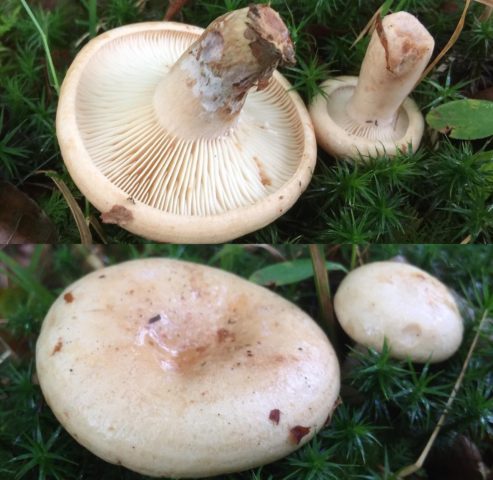
The pale milky has a dull light fawn color, which is why it got its name
Is it possible to eat pale milkweed?
The pale lacticaria mushroom is conditionally edible. It has weak gastronomic qualities, but is quite rich in microelements. It tastes bland at first, but then becomes spicy.
False doubles
In appearance, the dull lacticaria can be confused with the following mushrooms:
- milky sticky – classified as conditionally edible, distinguished by its milky juice darkening in the air and the color of the cap being slightly darker;
- fragrant milk mushroom – a conditionally edible specimen, the distinctive feature of which is a delicate coconut aroma, as well as a fluffy surface of the cap with a pink tint;
- pepper milk mushroom – refers to conditionally edible, larger in size, the milky juice turns yellow when dried, the color of the cap is whiter.
Rules for collection and use
Mushroom pickers don’t often come across pale milkweed. It should be understood that the collection of any mushrooms, including this species, should be carried out in places located away from roads and large enterprises.
After harvesting, mushrooms necessarily require pre-processing. After this, they are only suitable for pickling with other species. The fruit bodies are first pre-soaked for several days, then boiled for 7-10 minutes and only then salted.
Conclusion
The pale milkweed is conditionally edible, and it is noted that its fruiting bodies are rich in various microelements, which include iodine, potassium, sodium and phosphorus. But if cooked incorrectly, the mushroom can cause an eating disorder.
